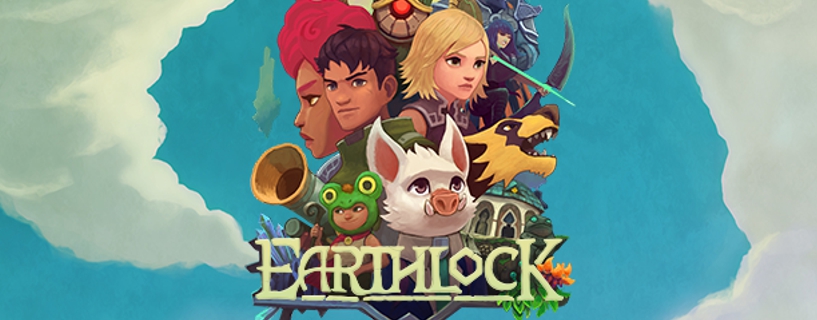Earthlock draws its inspiration from classic JRPG’s of the 90’s, yet with a modern graphic look and feel to the gameplay. It has the most flexible option set I have ever seen and as you progress through the game, you’ll find that it is fairly well balanced in combat as well.
Type: Single-player
Genre: Adventure, RPG, Strategy
Developer: Snowcastle Games
Publisher: Snowcastle Games
Release Date: Mar 8, 2018


Indie JRPG
Earthlock tries to bring back some retro JRPG goodness in a graphically beautiful indie package with an assortment of combat and leveling options that I honestly think allow the player to personalize their method of playing like few games can. It’s does feel like there are almost too many options, yet it works for the most part with some decent strategic combat and a plethora of items and ammo. However, there are some aspects that don’t shine as well such as the character development, side quests, and a combat wall that may or may not appeal to you due to a level cap. Still, it’s an interesting title that I am glad I played.
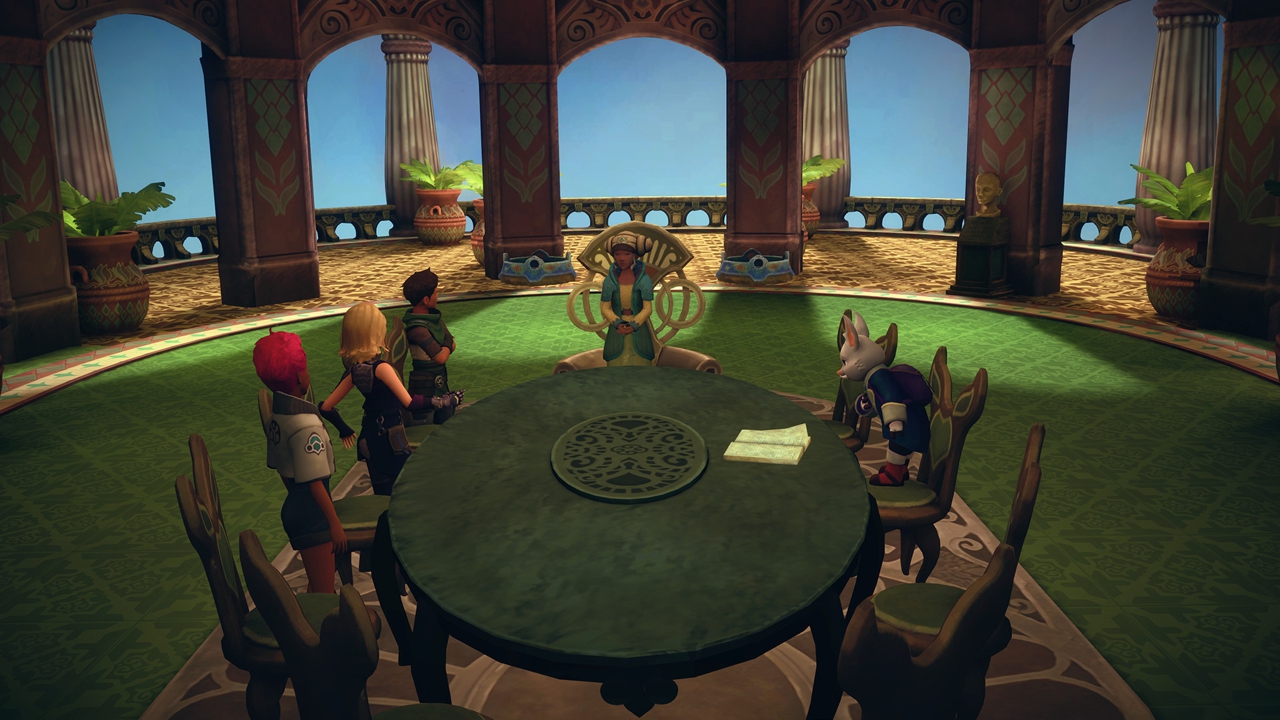
Story
I think there are some widely varied sections that go above and beyond what I expected, yet the main characters feel more shallow than they could be and sometimes that is simply because of an odd choice for the presentation sequence of the story instead of the story writing itself. For example, the game starts out in Ive’s bedroom with a short tutorial on combat. It would have greatly benefited from some dialogue or a short sequence about her life before going straight to combat training. All we can gather from the outset is that she has a dog and is in the military. Later on, we’re informed that her father is a general and she is constantly trying to prove her worth to him. If we had simply started close to that scene first, followed with her reactions and dialogue, it would have developed an emotional reaction from the player right at the very beginning rather than the other way around. You’ll see this again with the other main character, Amon. We start off with combat training yet again instead of the dramatic story of his uncle Benjo’s ill health and the hunt for the mystery of the artifact they find. Everything is right there for a good story, but the pacing and organization of the storyline make the characters less substantial with the emphasis on combat first. It’s not bad per se, it’s just that it could be better. From there on you’ll have combat, dialogue, combat, combat, dialogue and so on. For JRPG fans out there, you’ll know what I am talking about because if the story and presentation don’t keep up with the combat development, it can make a good JRPG rather mediocre.
Now, a change in this happens once you encounter Gnart, a hogbunny who has the best dialogue of the game and whom without the game would likely suffer from poor character involvement. Gnart is a scholar and eloquently provides a modicum of comic relief with his general inability to provide much in the way of combat, but you will quickly find that he will be your main source of health and backup. Without Gnart, you will die a terrible death, believe me, but it’s his wit and sincerity that make you want to keep reading his lines. As the game progresses, his comments and reactions are the stuff I live for with JRPG’s. Whimsical and aloof, yet kind-hearted and endearing, he is the sole character I cared about throughout the game and his character in Earthlock is essential to the charm of the game.
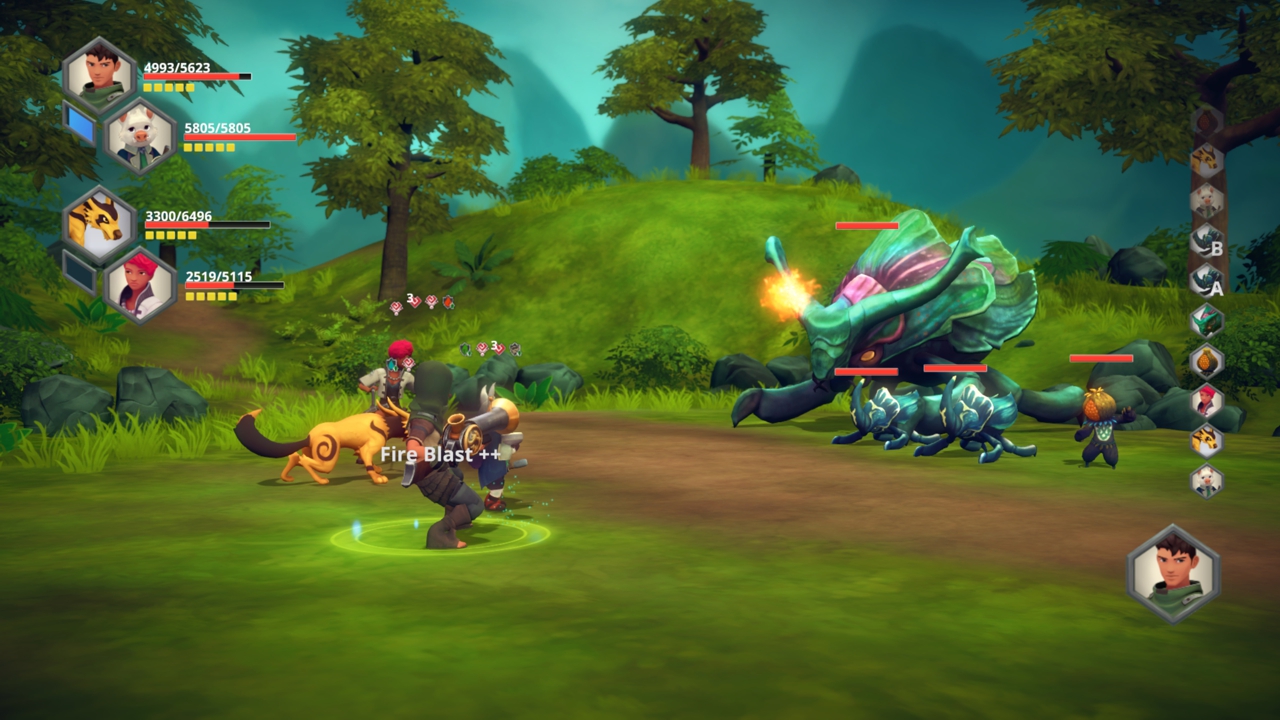
There are a few other protagonists in the game such as Olia who is trying to repair a mysterious mechanism, Ive’s dog Taika, and a robot named PAT. Let me say first that there isn’t much story developed for PAT as the robot mostly serves to decode encrypted tablets, he talks in jibberish. Taika can’t talk, except for when Ive tells us about it, and Olia is rather to the point and more of a warrior. So, it leaves all the real dialogue between Amon and Ive, which isn’t all that much in the way of character development because they are often busy talking about how to win the day. Uncle Benjo’s involvement is rather paramount in the story, but it amounts for a rather tedious mission instead, which feels weird. The story does have some central themes which I’ll discuss later, but that’s really the bulk of the character storylines in the game.
As for side characters, I loved Frogboy. He is a Peter Pan of sorts, wearing his frog helmet and chit-chatting about his island retreat, which becomes our base of operations in the game. The rest of the side characters serve as placemarkers at best without much in the way of interesting conversations. I did enjoy all the NPC dialogue, as it fills out the areas with people well.
The storyline is fairly basic fare, a band of new friends are out to defeat an evil person from taking over the world. I won’t go into detail lest I ruin the story, but I doubt you’ll be surprised about the central structure of protagonist vs antagonist as it unfolds. Much of the character situations are ones you have encountered before with other JRPG’s.
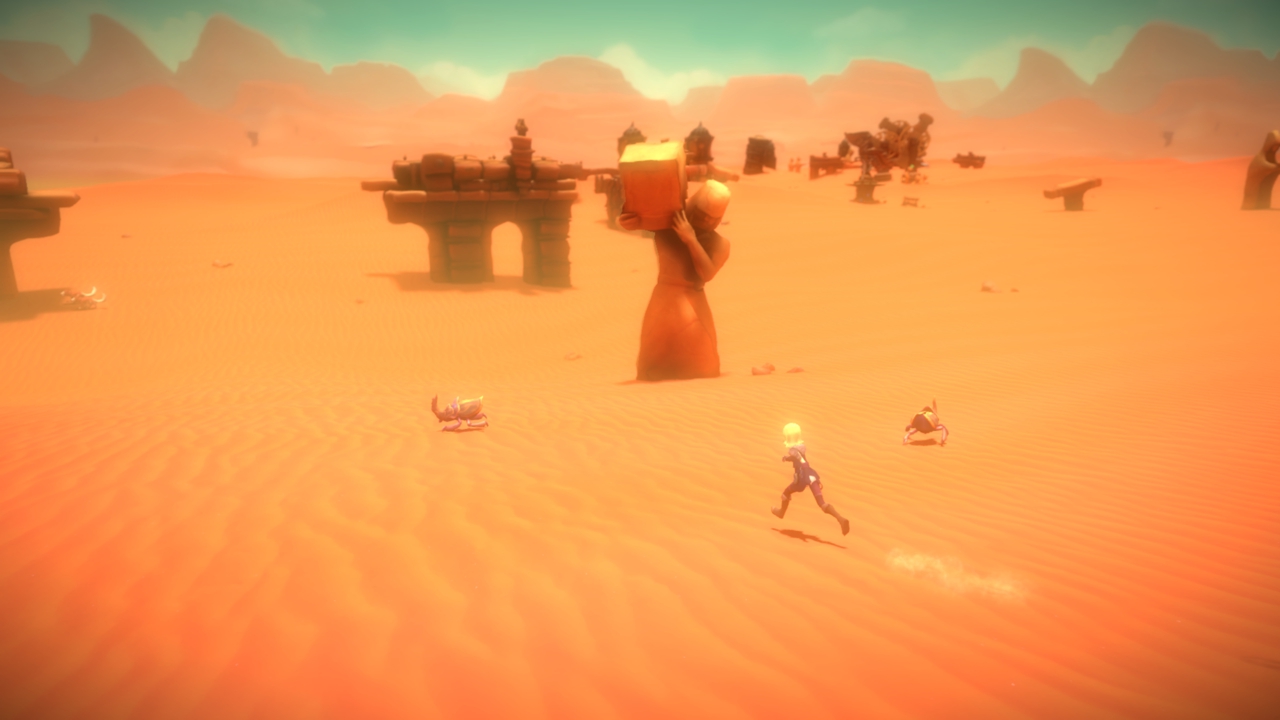
Combat
The reason why Earthlock starts off with combat training is because the combat is the meat of the game. It’s all turn-based JRPG style combat with an area showing who is attacking next, the ability to choose who to attack, a center “wheel” to pick from a list of abilities to fight with, some items for health, and an option to rest or feign death to leave the battle. This is nothing JRPG veterans haven’t seen. As a matter of fact, it doesn’t try to re-invent anything here. You’ll find very classic JRPG structure to the combat.
There are different types of ammo which are unlockable as you level up through the course of the game, but that’s just a part of it. You can actually GROW your ammo. That’s right, there is a “Farmoury” where you can grow plants that provide you with ammo and health supplies. It’s a bit of a mini-gardening game where you can grow a somewhat interchangeable assortment of plants to come up with upgraded ammo combinations. Need a potato for that blaster? Why not crank it up a notch with some Electro-Roots and make it an electrified potato gun! Yep, we have a fully sustainable and environmentally friendly means of providing death to your enemies. It’s oddly addictive and I have to say that it’s rather easy to rack up hundreds of ammo supplies just in day to day gardening.
Each party member has two “stances” for battle, a melee or ranged attack. Some members, like Taika for instance, can attack every single enemy at once while others like Olia target one at a time. Taika and Gnart can instead switch to a defense stance and provide different types of healing or buffs against attacks from a variety of elemental barrages. PAT can also provide protection from more physical attacks like being crushed. Additionally, there is a power up you gain after awhile that allows you pummel all the enemies, or single boss, at once. It is a bit player-favored, but still it can help turn the tide when all is almost lost in a battle to the death. All this put together is a very wide assortment of combat options that you can choose to implement both before and during battle, although there is a time cost when changing stances on the fly while fighting.
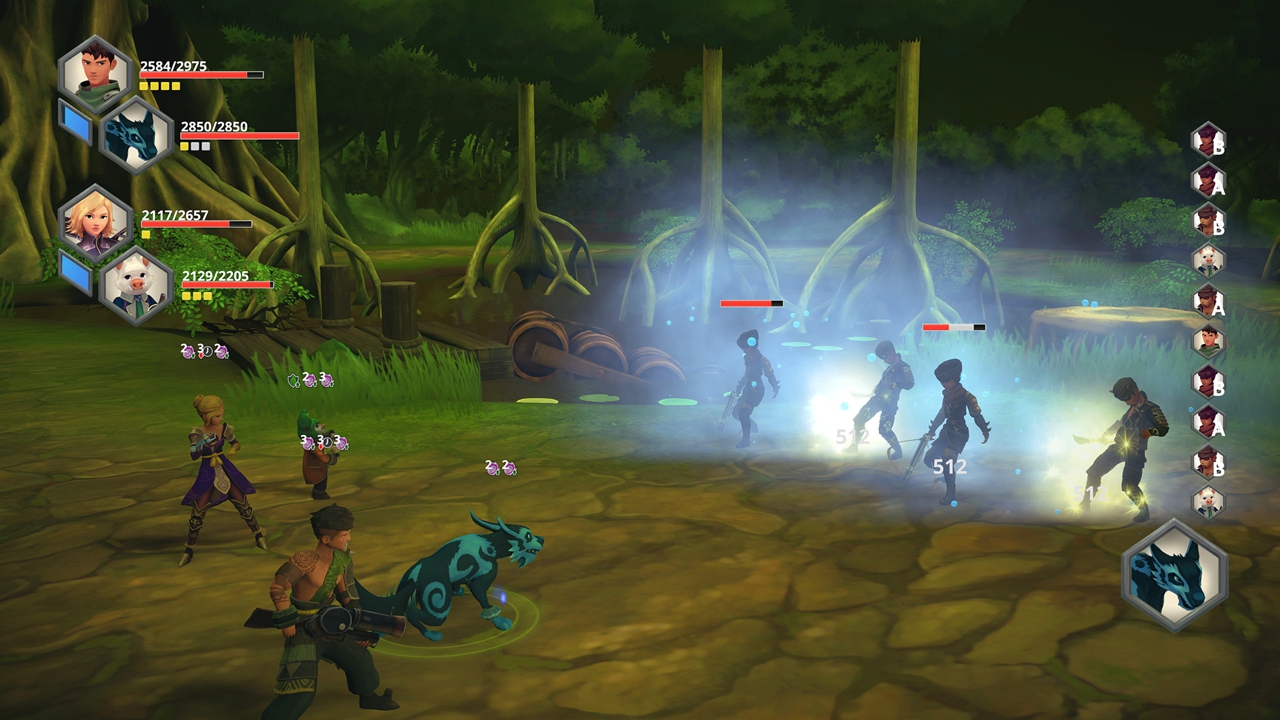
Enemies vary as well. Some attack with brute force, but others may poison you, or hit you with elemental attacks that if done to each party member cumulatively, allow them to follow up with a death blow. There also can be aerial enemies or enemies that move from the air to the ground randomly, requiring you to change your stance to ranged and back to melee. Others still can cast spells of confusion, making you attack your own party. It’s all quite diverse. Herein comes the best part of Earthlock, there is real strategy involved. You can stroll over to some unknown places and get blown to pieces if you like, but you honestly have to keep in mind what your level is and if you can muster up the strength to make it across an entire environment to complete a mission. The closest I can think of to this is Ni No Kuni 1, but it’s not quite that advanced.
You also have the option of fighting large battles or small ones. When you wander across an area, often littered with groups of enemies, you can run and move out of range a bit, then attack 1-2 enemies rather than the whole group. This conserves your health and makes it easier to get past them. The downside is that attacking multiple enemies gives you bonus XP. So, keep that in mind as you level up. Don’t get too cocky, though, as fighting 10-12 enemies is a whole different experience than a gang of 4-6 of them. You may not make it out alive.
There is a level cap of 20 per party member. Now, this is good and bad. It can be bad if you love grinding and want to blow all the enemies out of the water with the power of a god, but it can also be good. I say that because I enjoy strategic RPG’s and having a level cap where I have to out-think my opponent with the party member abilities on hand is a lot more interesting than simply being an unbeatable god of destruction. I would not say that it’s incredibly challenging, but more challenging than just blowing right through everything. I had the most trouble with boss at Dhur, as he could kill the whole party with one hit once he electrocuted everyone. Some may feel the level cap is too low, but I don’t agree with that. If you tend to grind every chance you get, you’ll likely level up a bit too soon. I’d advise grinding just a bit at the beginning, a regular amount afterwards, and then again in the frozen area, but that’s just me.
One of the oddest things I found were the controls. On a controller, I had the hardest time trying to select a character to perform an action. The selection just went everywhere, meaning I could heal an enemy or attack a party member by accident. My Xbone controller was the worst, my xbox 360 controller somewhat better, and my steam controller was more manageable. Keyboard was okay, but I settled on the Steam controller. This did not make any sense to me until I got about 60% done with the game. At that point, you actually need to attack your party members to knock them out of an electrical shock or some other slowdown. However, this was frustrating because I had used so many “evade” types of upgrades that they would evade the attack, meaning the whole group was at risk because I could not knock them out of the shock. Luckily, you can adjust their talents before a fight, but at the risk of having that party member get hit by every single attack thrown at them. It’s a bit of a balancing act.
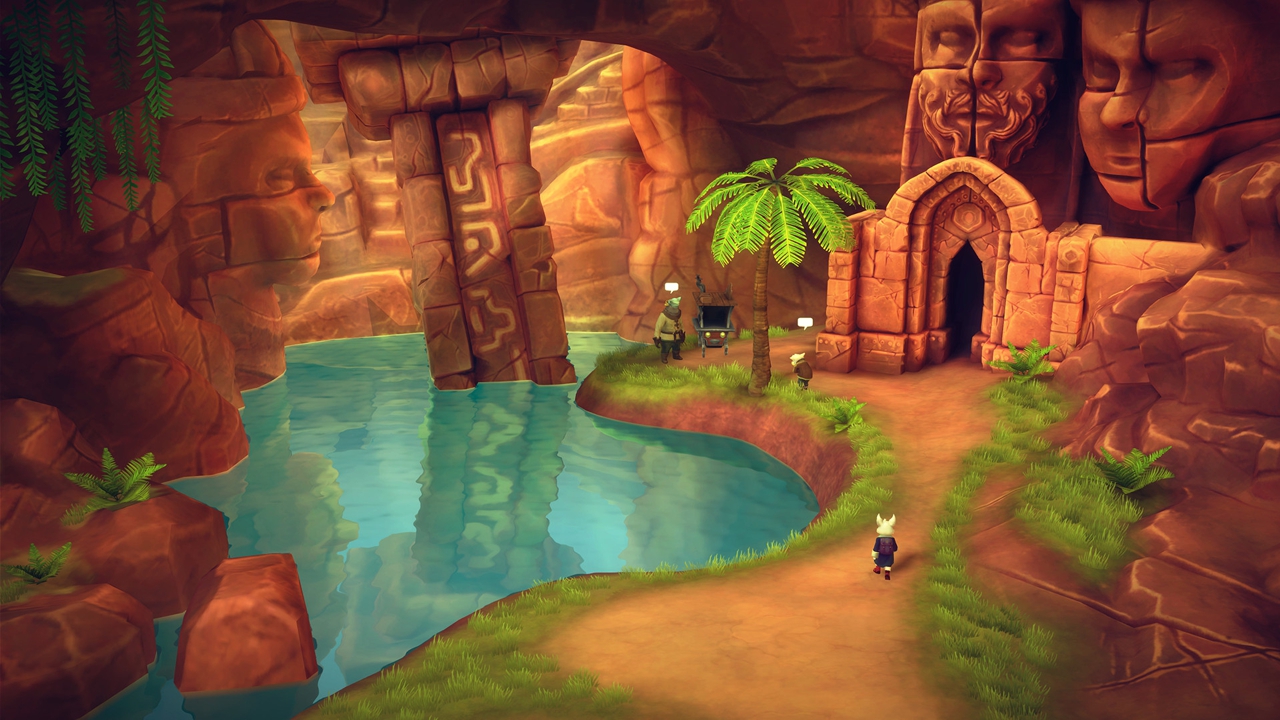
There is also a “Bond” method of leveling by using different pairs of characters together. I highly recommend doing this as you get more perks and talents for leveling up and strengthen abilities while you learn how to more effectively pick which character pair works best for a given situation. Having both the bond method and regular battle method for gaining abilities is a great idea.
Overall, the combat is well done and balanced enough that it is not overly difficult yet provides a good challenge. Do not take this game lightly, as you get towards the end of the game, you will be tested to a great extent because the bosses tend to be immune to some types of attacks. Use your tactics carefully.
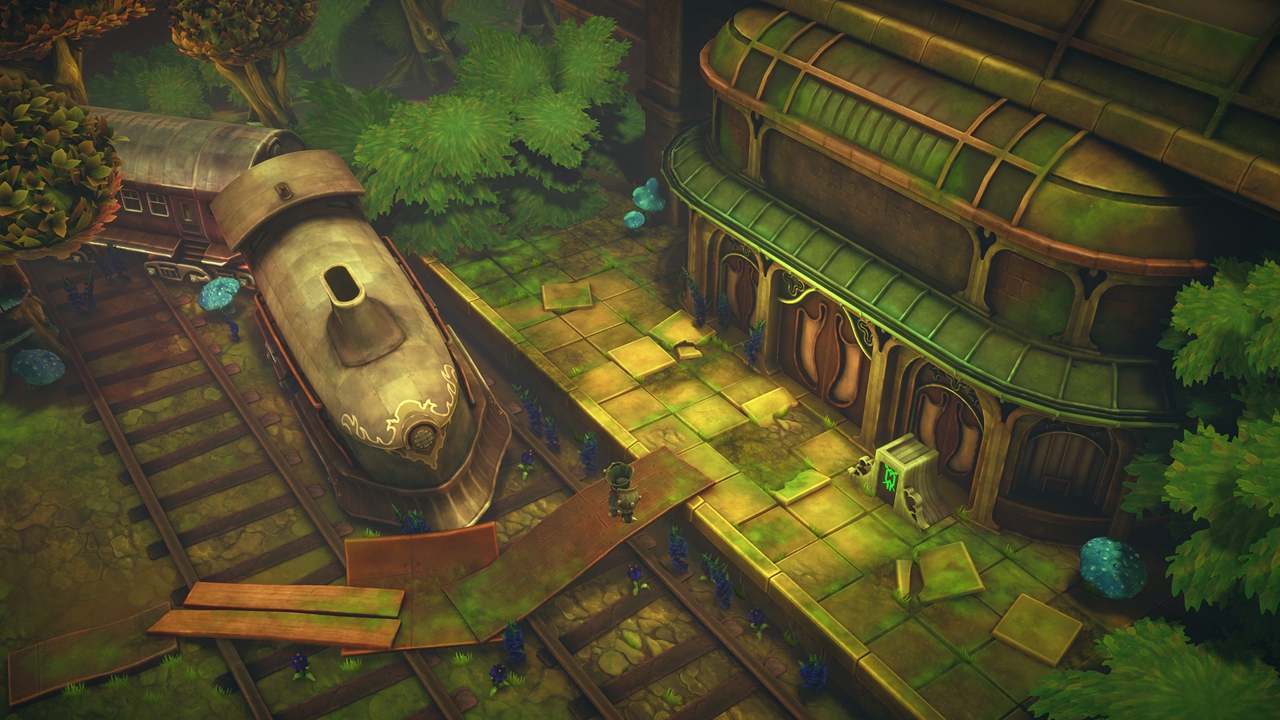
Exploration
As you literally run your way across the many landscapes in what is called the “Overworld”, you’ll discover a few hidden treasures here and there by finding them randomly or digging them up with Taika. What I found most surprising was that I could unlock some bosses that were many battles away by simply going as deep as possible into the area. I was far from leveled up enough to fight them at the time, but it was a nice open-world feel nonetheless.
The main reason for exploring the game, as well as I can see, is to locate materials for weapon upgrades and level up. There are collectibles here and there, but I generally don’t care unless there is a serious benefit associated with it. There are also side quests to do, but most of them aren’t worth the effort and time involved to figure them out because the quest solutions are seriously hidden beyond belief. It’s really the most frustrating part of the game.
While the world is an okay experience to traverse, I never had a feeling of “oh, wow” happen to me. The world itself is like many JRPG’s, used primarily to perform fetch quests or battles with some occasional supplies, and this is fine by me. As I said earlier, Earthlock doesn’t set out to reinvent anything you haven’t seen before. It’s just a rather well done amalgam of some of the better parts of past JRPG’s.
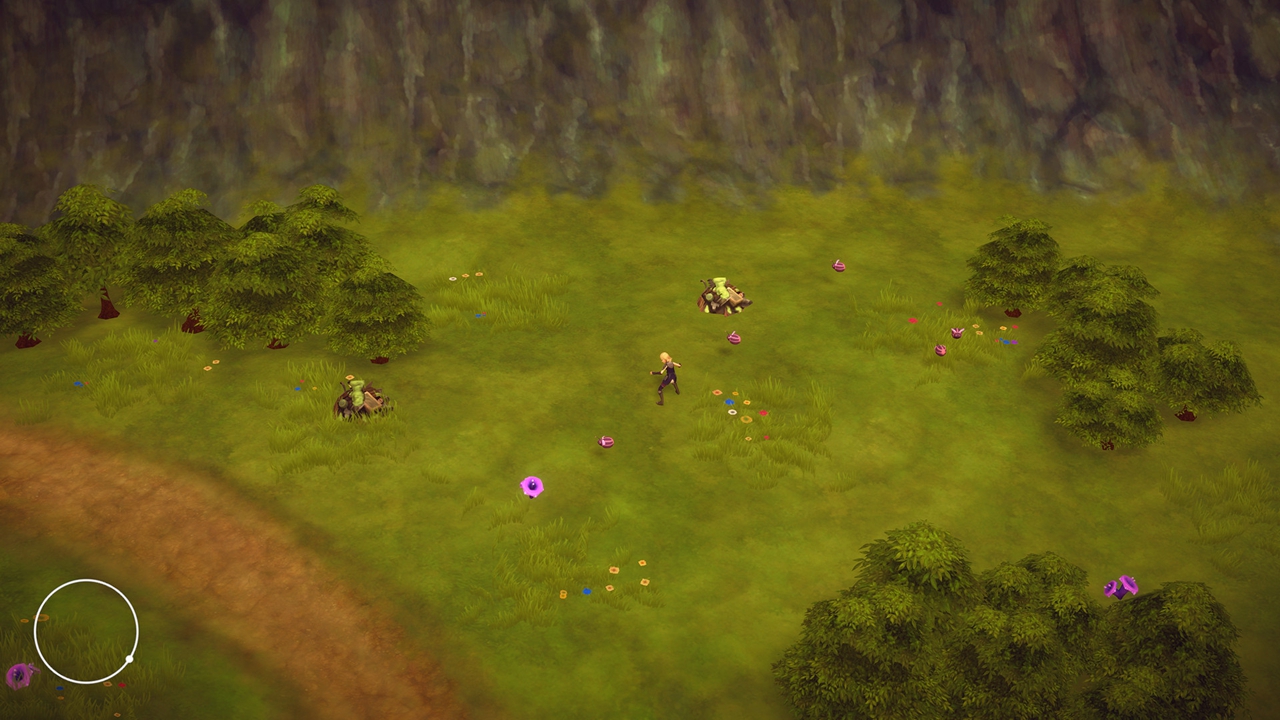
Leveling/Talents
As mentioned before, besides gaining XP with combat, you can achieve “bond” strengths with certain pairs of party members while fighting to unlock certain abilities and perks. I highly suggest maxing these out as soon as you can, it’s not something to be ignored. You have to switch out these pairs a lot as you only have four slots for fighters, but a total of six characters to select from. The boosts you get from bonds can make or break a battle.
Along with this is a talent board where you can assign additional perks, stats, and abilities according to the space designated for each option. These all must be connected to each other in sort of customizable branch-line, it’s great. The nice thing about this is that you can re-arrange the board however you like during the course of the game and even swap out talents with other characters. This allows you to change not just your strategy as you go, but the options for your capabilities as well. It’s well thought out and gives the game a great measure of flexibility.
At your headquarters at Plumpet Island you can also craft some of these perks that go on the talent board if you have the recipe for them. Most of the ingredient items are available for purchase form Frogboy at a discount price, but there are some items that simply have to be found either in combat or more likely scavenged from the “Overworld”. Don’t get disappointed, though. Try to get as much a variety of them as you can.
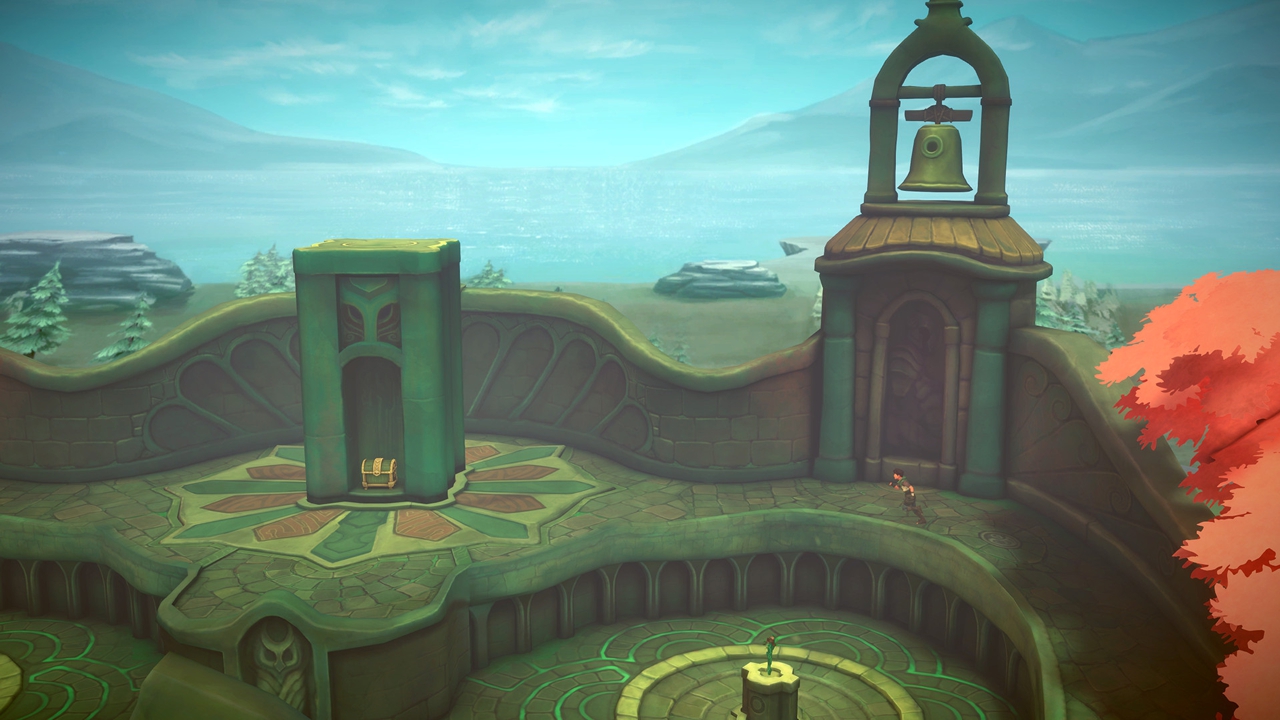
Graphics and Sound
The almost hand painted look of the backgrounds is exceptional and kudos to the artists who made it a reality. You’ll find a wide variety of locales such as swamps, deserts, and frozen lands, all of them with wonderfully drawn and inked graphics. Also, the game runs at a very steady 60 FPS even on a mid-level system. I can’t say anything bad about the graphics other than the large open areas you explore. They look too barren and empty, with an almost pre-alpha build vibe that did not jive with the rest of the game. I think if they can made those open spaces more vibrant the game would feel so much better. It needs a touch of a Ni No Kuni open space to it.
I can tell the soundtrack went through the trouble of a full composition as I hear repeated motifs throughout the game with different variations depending on the scenery involved. There are separate tracks for each environment and it was never irritating or sub-par. The sound effects also do a good job of informing the player of battle situations and such throughout the game. There are no voice actors, though, and that I think is a real shame. Some good voice actors can bring a game to another level of playability. I’ll take Masters of Anima for a reference as that game had superb voice acting and made what would have been otherwise repetitive actions feel more interesting because I wanted to hear how the lines came out. It’s not so with Earthlock. While the text boxes are adequate, you lose that sense of persona from having a voice actor present.
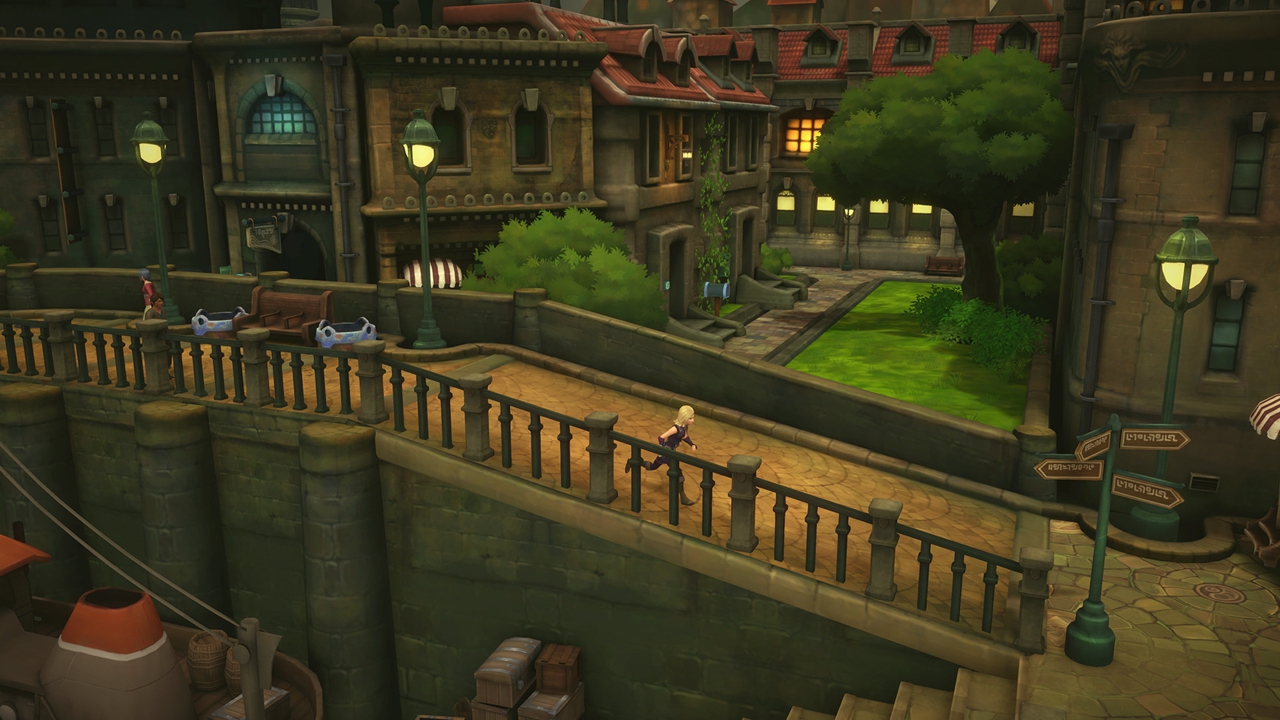
Verdict
Honestly, the first hour and a half of the game didn’t draw me in. It wasn’t until Gnart joined that I even began to get into the swing of things and follow what was going on more closely. It seems rather odd that the characters do not get interesting until after a somewhat long period of time for me, but perhaps that is due to the editing for this final version of the game compared to the Festival of Magic version. After that, the combat also became more intense, the storyline filled in more, and I rather liked the setup for the turn-based attacks as it was more strategic than I expected. Looking for loot or treasures never gave me much of a thrill, but defeating bosses certainly did and grinding never became a chore once you found an area worth the challenge. Earthlock is very helpful is guiding the combat, even to the point of warning you if you haven’t leveled up enough to fight a boss and providing strategy hints if you want to look at them with Frogboy.
The puzzles were very much on the easy side, but it’s obvious this game is all about the combat and mastering the mechanics along with the permutations of options at hand. I do have to say that the side quests can be absolutely frustrating because many of them leave out the finer details of what to actually do. You very well may need to look up an answer if you want to complete all the quests. Some of those solutions are outright hidden and that is really a shame because it doesn’t help the game one bit.
Still, Earthlock is enjoyable as a JRPG that sticks with you for it’s combat and a few memorable characters. Frankly, this game had to grow on me and it really did improve the longer I played. I wasn’t sure how the rating would go because I changed my rating for this game a few times, but in the end I have to give it a Save. With some patience, this indie title eventually begins to shine with good strategic balance and some great challenging boss battles. If you center in more on story, keep in mind this story is okay, but doesn’t pan out until a few hours have passed where it feels like much of the story seriously improves.

